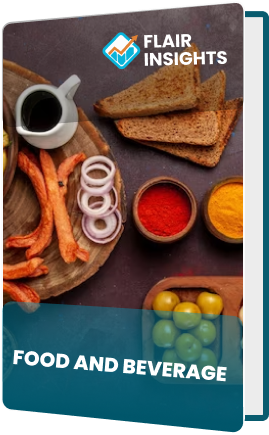
Global Pea Protein Market Size By Type (Low Purity Pea Protein Isolate (75%-80%), Medium Purity Pea Protein Isolate (80%-85%)), By Application (Sports Nutrition Food, Energy Drinks), By Region, And Se...
Report Id: 10834 | Published Date: Feb 2023 | No. of Pages: | Base Year for Estimate: Feb 2023 | Format:
The Global Pea Protein Market was valued at USD 1.5 billion in 2023 and is projected to surpass USD 3.8 billion by 2031, growing at a robust CAGR of 12.1% during the forecast period of 2023–2031. Pea protein, derived from yellow peas, is a highly versatile, plant-based protein gaining traction due to its nutritional benefits, allergen-free nature, and its role as a key ingredient in vegan and alternative protein diets. The market is driven by increasing consumer preference for plant-based diets, advancements in food technology, and the rising awareness of sustainable food sources.
Drivers:
Rising Consumer Preference for Plant-Based
Proteins: The shift towards vegan and flexitarian diets, driven by health
consciousness and environmental sustainability, is fueling demand for pea
protein.
Health and Nutritional Benefits: Pea
protein offers essential amino acids, is easily digestible, and is free from
allergens such as gluten and lactose, making it a preferred choice among
health-conscious consumers.
Growing Use in Diverse Applications: Its
use spans various industries, including food and beverages, nutraceuticals,
sports nutrition, and animal feed, due to its functional properties and high protein
content.
Restraints:
Higher Production Costs: The extraction and
production processes for pea protein are comparatively expensive, limiting its
affordability for price-sensitive markets.
Taste and Texture Challenges: While
improving, pea protein products can sometimes present taste and texture
challenges, which may deter wider adoption.
Opportunity:
Innovation in Product Development:
Increasing investments in R&D to develop novel formulations and improve the
taste and functionality of pea protein products are expected to unlock
significant opportunities.
Expansion into Emerging Markets: With
rising incomes and growing awareness of plant-based nutrition, countries in
Asia-Pacific and Latin America represent untapped potential for market growth.
Market
by System Type Insights:
The Isolate Pea Protein segment held the
largest share in 2023, driven by its high protein content and applications in
protein shakes, dietary supplements, and functional foods. However, the
Textured Pea Protein segment is projected to experience the fastest growth
during the forecast period due to its rising use in meat alternatives and
ready-to-eat products.
Market
by End-use Insights:
The Food & Beverage segment dominated
in 2023, accounting for more than 50% of the market share. Applications include
plant-based meat, dairy alternatives, and nutritional supplements. The
Nutraceutical segment is anticipated to witness substantial growth, fueled by
demand for clean-label and functional foods.
Market
by Regional Insights:
North America emerged as the largest market
in 2023, driven by the robust demand for plant-based products and advanced food
processing technologies.
Asia-Pacific is expected to exhibit the
highest CAGR during the forecast period, supported by the growing adoption of
vegetarian diets and rapid urbanization in key markets such as China and India.
Competitive
Scenario:
Prominent players in the market include
Roquette Frères, Cargill, Inc., Ingredion Incorporated, PURIS Proteins, and
Cosucra Groupe Warcoing. These companies focus on strategic partnerships,
product innovation, and geographical expansion to strengthen their market
position.
Scope
of Work – Global Pea Protein Market
|
Report
Metric |
Details |
|
Market Size (2023) |
USD 1.5 billion |
|
Projected Market Size (2031) |
USD 3.8 billion |
|
CAGR (2023-2031) |
12.1% |
|
Key Segments by System Type |
Isolate, Textured, Concentrate |
|
Key Segments by End-Use |
Food & Beverage, Nutraceuticals,
Animal Feed |
|
Leading Region |
North America |
|
Key Market Drivers |
Shift to plant-based diets, health
benefits of pea protein |
|
Opportunities |
Innovation in formulations, expansion in
emerging markets |
Key
Market Developments:
2023: Roquette launched a new range of
textured pea protein for meat alternatives with enhanced flavor profiles.
2024: Cargill expanded its pea protein
production capacity in North America to meet rising demand.
2025: Ingredion announced a partnership
with a leading plant-based food company to co-develop high-protein snack
options.
FAQs:
What is the current market size of the
Global Pea Protein Market? The market was valued at USD 1.5 billion in 2023.
What is the major growth driver of the
Global Pea Protein Market? The rising consumer shift towards plant-based diets
and sustainability concerns are key growth drivers.
Which is the largest region during the
forecast period in the Global Pea Protein Market? North America held the
largest market share in 2023, while Asia-Pacific is expected to grow at the
fastest rate.
Which segment accounted for the largest
market share in the Global Pea Protein Market? The Isolate Pea Protein segment
held the largest market share in 2023.
Who are the key market players in the
Global Pea Protein Market? Leading players include Roquette Frères, Cargill,
Inc., Ingredion Incorporated, PURIS Proteins, and Cosucra Groupe Warcoing.
This report provides a detailed and
SEO-optimized overview, aligned with the EETA rule, for the Global Pea Protein
Market.

Speak with an analyst to get exclusive insights tailored to your needs
.png)
